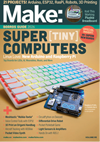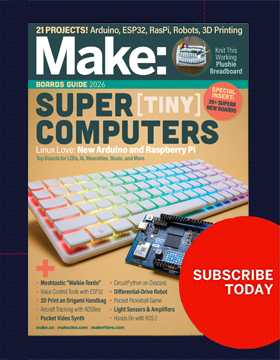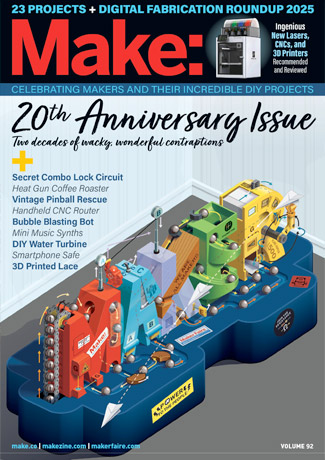

Sorry we haven’t run a “Lost Knowledge” column recently. We had the winter holiday rush to contend with, all those gift guides, etc. And there was a short holiday break in there somewhere. Anyway, we’re back on track and looking forward to a year of lost, nearly-forgotten, or preciously-preserved technologies. If you have ideas for columns (some of our more popular pieces last year came from you, our readers), please pop them into the comments below.

This week’s column is on a letterpress printing style I knew nothing about. One of the things I’m most proud of in my life is that I’m a printer by trade, or I used to be. It’s actually the only trade or discipline in which I have any formal training. To my over-romantic mind, there’s something extremely noble, even patriotic, about being a printer. It’s no wonder that William Blake and Ben Franklin are a couple of my heroes. I co-ran a small job shop for about five years in the late 70s, doing everything from flyers for the local supermarket to full-blown newsletters and magazines, even a couple of books. We did offset lithography, not letterpress, but I was basically familiar with letterpress and the techniques and technologies involved. So I was surprised when I came across a book in a paper store (I’m such a printer nerd that I still haunt paper stores) on the Victorian heyday of “artistic printing,” something I’d never even heard of. (FWIW: Wikipedia doesn’t even have an entry for it.)
The book (which I, of course, had to get) is called The Handy Book of Artistic Printing, by Doug Clouse and Angela Voulangas (2009, Princeton Architectural Press) and it’s a wonder. It covers the history of artistic printing, shows examples of the machines used to create it, and offers dozens of gorgeous examples of the artform, along with thoughtful commentary on each example. The book itself is a lovely piece of bookart (er… offset lithographic bookart).



(Pages from The Handy Book of Artistic Printing)
So, what exactly was artistic printing? It was a short-lived Victorian-era style of letterpress printing, in many ways inspired by new technologies that allowed letterpress printers to get far more creative with what could happen on a printed page. Artistic printing started in Britain, spread to the US, and enjoyed widespread popularity, from the 1870s to the 80s, especially with the growing consumer market and product advertising and packaging. It, in many ways, marked the beginnings of modern print design and graphic arts. Letterpress printers, who’d changed little in their style and techniques for some 400 years, suddenly had the ability to embellish and ornament their compositions, to go beyond the rigid grid established by the block and frame structure of the traditional letterpress type bed. Part of this was driven by the recent emergence of a competing technology, chromolithography, which allowed for color printing and gave printers much more freedom with what they could do. Letterpressmen needed to compete. New machines for producing custom brass curved lines and embellishments, and advances in typecasting tech, allowed letterpress printers to create highly ornamented designs, with curved type and borders, art and type on the diagonal, and extremely detailed graphical elements. Some arbiters of style thought all of this ornamentation got out of hand, and by the end of the century, artistic printing was decried as a “freak of fancy.”
With the newfound enthusiasm for letterpress printing recently, and now the publication of this inspiring book, look to see more of this unique style of design and printing cropping up. I’ve already been inspired to get my own “trade card” printed by a local letterpress printer using this style.
BTW: As much as I love this book, the $40 cover price for a paperback is a tad high. Luckily, you can get it on Amazon for $26.40, a more reasonable price.
To learn more about artistic printing, and see dozens of additional examples, check out Dick Sheaff’s amazing Sheaff : ephemera site. All of the images below (unless marked) came from there (and are used with permission).
For all things related to letterpress printing, you’ll want to bookmark the Briar Press site.


Images of the Golding Jobber, a letterpress that would have been in use in the era of artistic printing. (via Briar Press)

Hansen’s Curving Machine for curving and bending brass rules.
(Collection of Stephen O. Saxe via Sheaff : ephemera)

Earhart’s WRINKLER device for curving and bending brass rules.
(via Sheaff : ephemera)

Advertisement for Golding’s Curving Machine. 1884 Golding’s catalog.
(Collection of Stephen O. Saxe via Sheaff : ephemera)

J. F. Earhart The Color Printer, 1893
(via Sheaff : ephemera)

Sam’l P. Wright & Company “Trade Card”
(via Sheaff : ephemera)

From American Model Printer Vol.1 No.7 (1880)
(via Sheaff : ephemera)

Printers International Specimen Exchange Vol.IV 1883 By J. F. Earhart Border is Earhart’s “Chaostype”
(via Sheaff : ephemera)

Printers International Specimen Exchange Vol.IX 1888. Printed by A.V. Haight on the press shown. (Courtesy Grolier Club of New York, image courtesy Doug Clouse, via Sheaff : ephemera)
ADVERTISEMENT





